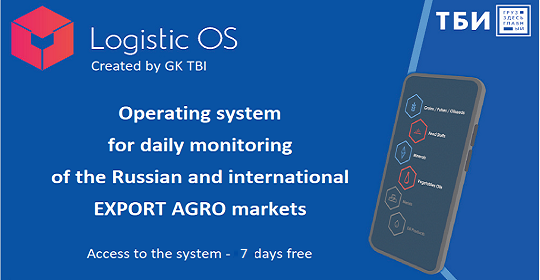According to the Ministry of Agriculture, the volume of grain exports in the previous season amounted to approximately 70 million tons, which was a record value in history.
If we compare the figures for Russian grain exports last year and the year before, we can note that supplies increased by 17%.
This is a fairly high growth rate, not to mention the fact that 70 million tons is a very significant figure.
At the same time, it is very important that domestic demand is fully covered.
As noted by the Ministry of Agriculture, this became possible mainly due to the use of such an effective tool as export quotas. Its essence is that for each season the government sets a maximum volume of grain exports, which exporters cannot exceed.
For example, from February 15 to June 30 of this year, the export quota was initially 24 million tons, but it was subsequently increased to 29 million tons. This may mean that the government is convinced that domestic demand in the country is fully covered.
At the same time, this year the Ministry of Agriculture expects that the volume of grain exports may decrease slightly.
We are talking about 60 million tons of grain, since the volumes will almost inevitably decrease due to unfavorable weather conditions, which are often observed in Russia this year.
As a result, the gross grain harvest this year may amount to 132 million tons, while in the previous season it was at the level of 145 million tons.
Obviously, such a significant drop in the gross harvest will inevitably entail a decrease in export volumes.
If we talk about the results of last year, then the Russian Federation mainly exported wheat, its export volume amounted to approximately 55 million out of 70 million.
This makes Russia an important player in the global wheat market, over the past year it has grown from 25% to 28%.
At the same time, supplies of other types of grain crops are also growing.
For example, barley exports increased to 8 million tons, which made Russia the world’s largest supplier of this crop. Corn exports also reached a record high last season, amounting to about 7 million tons.
In general, the main buyers of Russian grain are countries such as Turkey, Egypt, Iran, Saudi Arabia and Bangladesh.
At the same time, it is possible that future results in grain exports will be even more impressive.
This is due, among other things, to the fact that Russia is actively opening up new markets for itself today, obtaining phytosanitary certificates, which open up opportunities for the supply of new types of products to new markets.

